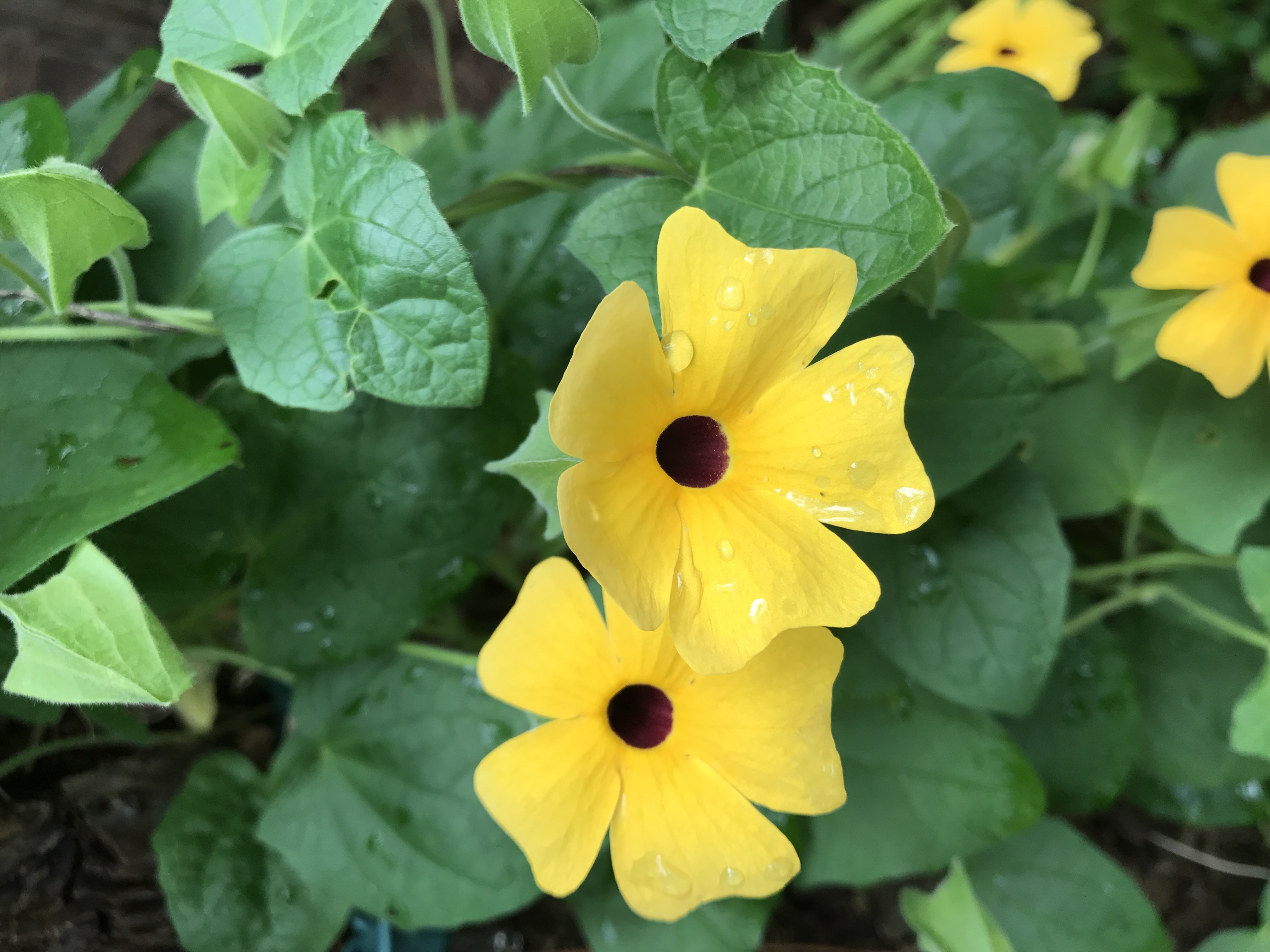Black-eyed Susan blooms are typically warm orange or lemon yellow, and sometimes a darker, more mustard-colored bloom with a characteristic dark spot in the center, although different varieties can be red, orange, red-orange, white, pale yellow or bright yellow, with or without the characteristic chocolate-purple center that also gives the plant its common name. / Loretta Gillespie
The Black-eyed Susan vine (Thunbergia alata) is perennial in some areas, but I have not had luck in its returning for the second year. Normally, I buy two each spring, and since it’s such a fast grower, I have no trouble with getting it to cover the 9-foot entrance to my garden. This, blooming, climbing plant species is in the Acanthaceae family, native to eastern Africa, and has been naturalized in other parts of the world. It can be found growing year-round in the southern U.S. in the states of Texas and Florida.
However, in our Zone 7 region, it is grown as an ornamental plant in gardens and in hanging baskets. I actually plant mine in the ground and let it caper up two pine trees, meeting at the arch between them. It’s absolutely gorgeous in August and September. Since it’s relatively inexpensive, it’s well worth the price each spring.
The name “Black-eyed Susan” is believed to have come from a character from several traditional folk songs. In the “Ballad of Black-eyed Susan” by John Gay, Susan goes aboard a ship in-dock to ask the sailors where her lover Sweet William has gone (Sweet William is also a garden plant). Black-eyed Susan is also the name of other species of flowers in the genus Rudbeckia, although those are single flowers, not vines, like the one featured here.
These vines can grow to a height of 6–8 feet in tropical zones, or much less as a container plant or as an annual; however, if happy where they are planted, given enough sun, plenty of water, and a place to climb, they will grow even taller. It has twining stems with heart or arrow-shaped leaves. The flowers have five petals and appear throughout the growing season. They are typically warm orange or lemon yellow, and sometimes a darker, more mustard-colored bloom with a characteristic dark spot in the center, although different varieties can be red, orange, red-orange, white, pale yellow or bright yellow, with or without the characteristic chocolate-purple center that also gives the plant its common name.
Thunbergia alata germinates readily in humus-rich soil with a little sand mixed in. Soaking the seeds in a dish of warm water over night will help the seeds germinate. This fast-growing, blooming plant will provide even more blooms for you if you give it a light trimming from time to time, but this isn’t absolutely necessary.
I fertilize this plant with fish emulsion fertilizer about every two weeks. It loves twining up tall pine trees, so if you don’t have an arbor, and want plants that don’t have to be fussed over, trimmed back each year or kept in check to keep it from going wild and taking over your garden, then this vine is for you!
Copyright 2017 Humble Roots, LLC. All Rights Reserved.




















